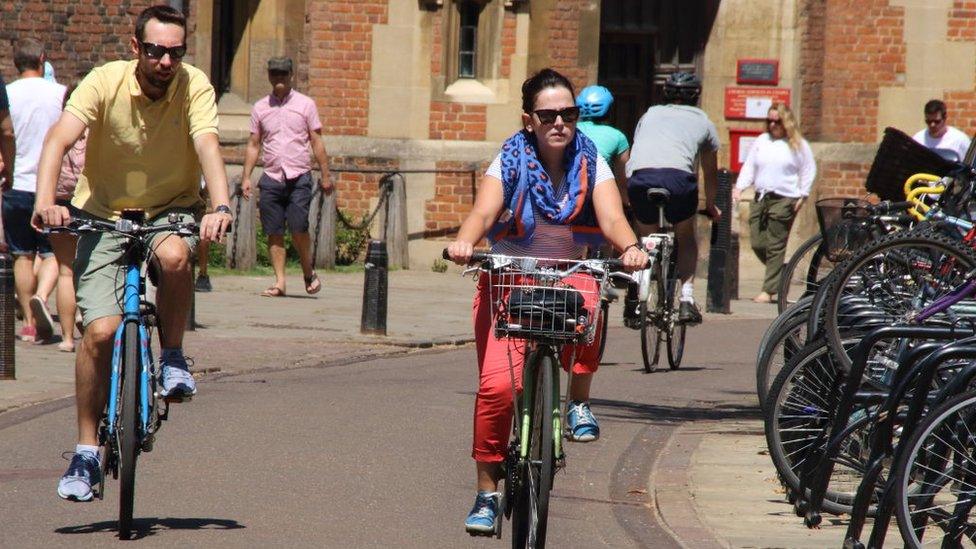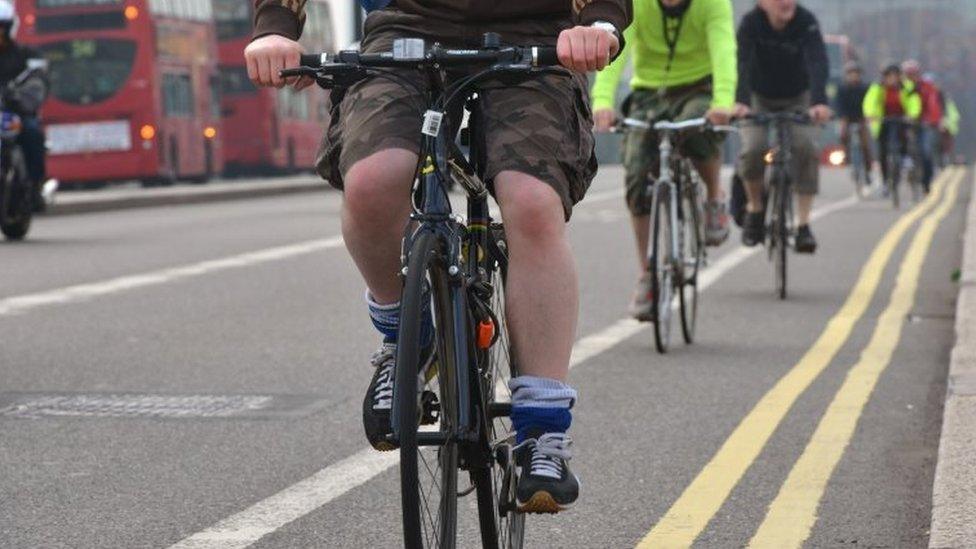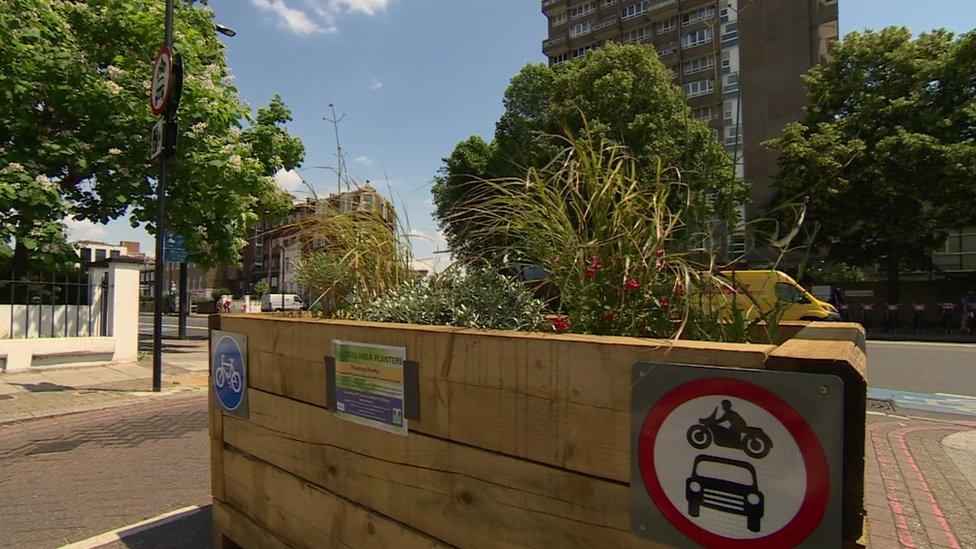Walking and biking prioritised in new Highway Code
- Published
- comments

New changes to the Highway Code will give pedestrians greater priority over cars at junctions and crossings, the transport secretary has announced.
Under the current code, motorists only have to give way when pedestrians step onto a crossing.
The new code will also ensure cyclists have priority when travelling straight ahead at junctions.
And a "hierarchy of road users" puts more responsibility for road safety on more dangerous modes of transport.
The Department of Transport said the changes, along with a £338 million funding package to boost cycling and walking, will help to sustain the increase in active travel during the pandemic.
Transport Secretary Grant Shapps said cycling and walking help people keep fit, reduce congestion and help the environment, so he was determined to keep the trend going by making them easier and safer.
The changes to the Highway Code, due to be published in the autumn, will affect England, Scotland and Wales. Northern Ireland has its own version of the code.
The DfT said the code's new hierarchy of road users would ensure "road users who can do the greatest harm", such as those in cars, vans and lorries, "have the greatest responsibility to reduce the danger they may pose to others".
The change was welcomed by Living Streets, a charity which advocates more walkable towns and cities,
Stephen Edwards, the charity's interim chief executive said: "The Highway Code currently treats children walking to school and lorry drivers as if they are equally responsible for their own or other people's safety.
"These changes will redress that balance."
He said people walking are the least dangerous road users but are "often left paying the price" of other people's actions.
Everyone would benefit, he says, as everyone is a pedestrian on some occasions, even if they drive or cycle at other times.
The DfT said the updated code would strengthen pedestrian priority on pavements and when crossing or waiting to cross the road.
Under the existing code, traffic does not have to give way at a zebra crossing until a pedestrian has moved onto the crossing.
At the same time, pedestrians are told they should not start to cross until the vehicles on the road have stopped.
The current code also tells motorists turning into a road at a junction to give way to pedestrians "if they have started to cross".
Tips from the Netherlands on how to build a nation of cyclists
The new code will also offer guidance and safe distances and speeds for passing cyclists as well as ensuring that riders have priority at junctions when travelling straight ahead.
The government said the additional funding will pay for hundreds of miles of high-quality cycle lanes, including improvements across the National Cycle Network, and help with new programmes to encourage walking.
Last year the number of miles cycled on British roads rose by nearly 46% to five billion, a larger increase than in all of the previous 20 years put together, the DfT said.
- Published30 June 2021

- Published28 June 2021

- Published16 May 2020
